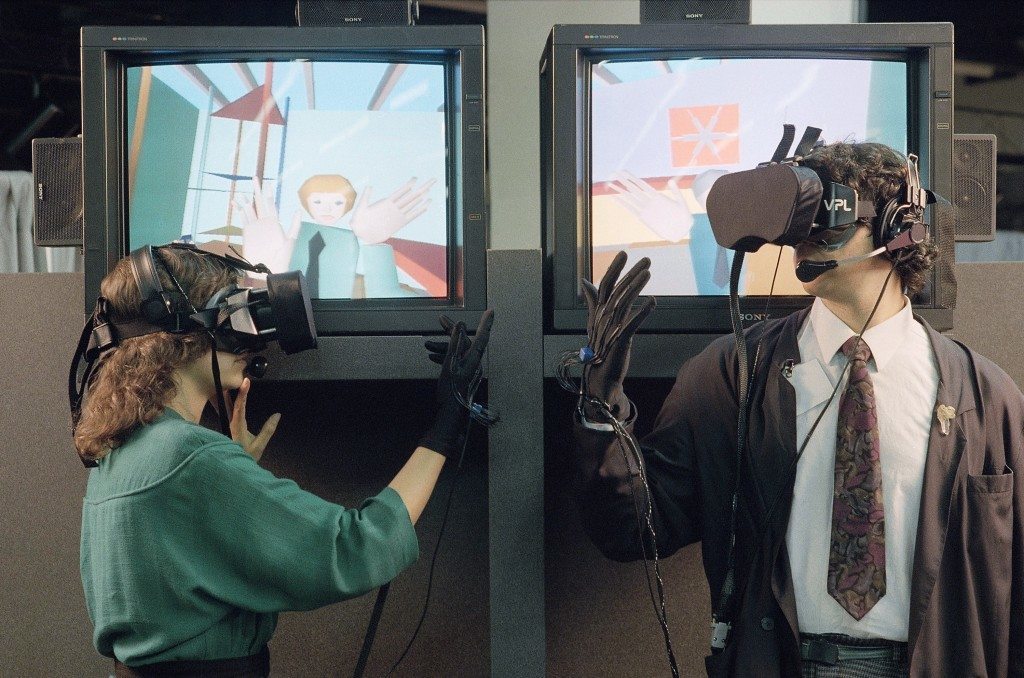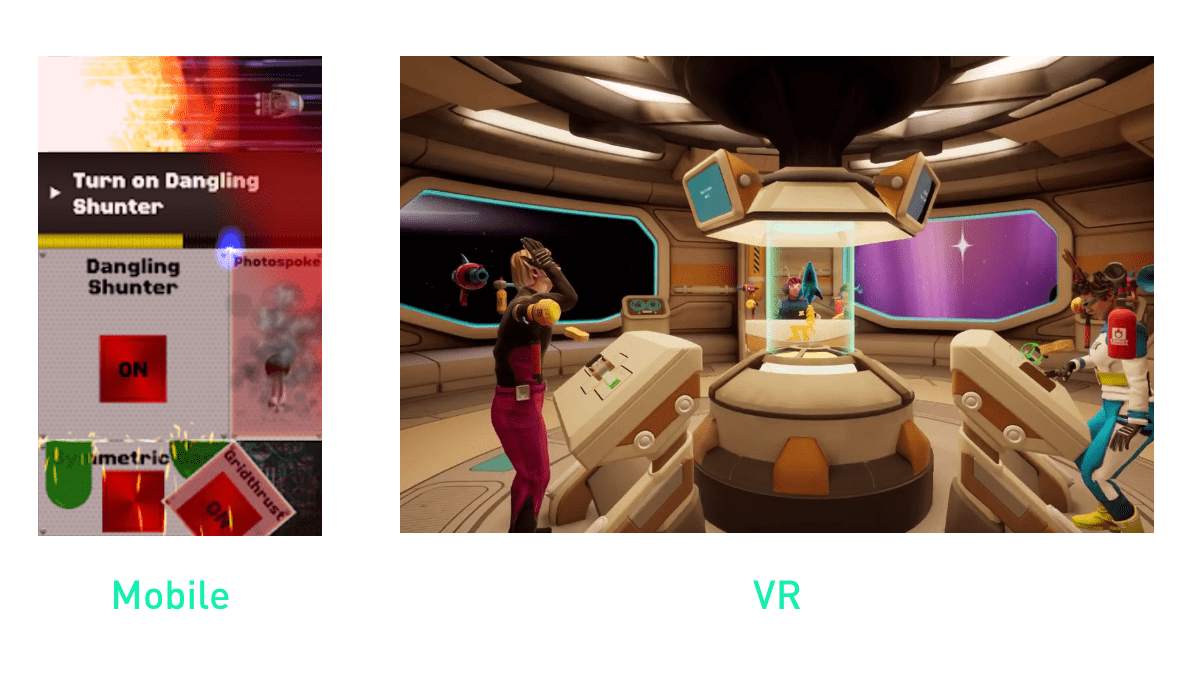· 7 min read
Five mobile games that nailed shifting to VR

Nicolas Estrem
Product Marketing at GameAnalytics
Virtual reality is no new concept. Have you ever heard of Sword of Damocles? It was invented by Ivan Sutherland and Bob Sproull, it was arguably the first VR / AR head-mounted display connected to a computer. That was in 1968. Today mobile games are at the start of shifting to VR
But it wasn’t until 1987 that Jaron Lanier used the name ‘virtual reality’ for the first time. He coined the term to help better describe his research. His company was the first ever to sell VR goggles, called the EyePhone, which cost upwards of $250,000 (including the computer to run it).

Image source: Flashbak
Of course, technology has come a long way since 1968. In 2021, the global VR market size was just under $5 billion, and research shows that we’re now predicting the market to increase to more than $12 billion by 2024. There are over 200 titles available on the Oculus Quest 2, and of course, you can rule them all on this platform using our 100% compatible GameAnalytics Android SDK. The PSVR counts over 500 titles as well. Many of our existing, well-supported SDKs work with VR games, and we’re already enabling some of the hottest VR developers to get usage and gameplay insights. But more on that later.
So there’s potential to enter this space early. But what about mobile titles that have turned to VR? What’s been working? Well, here are the best mobile games that switched to VR.
1. Fruit Ninja VR by Halfbrick Studios
Originally launched back in 2010 on Apple devices, Fruit Ninja was one of the first excellent smartphone app to enter the market. It quickly helped set the scene for what mobile gaming could achieve. And honestly, it was a no-brainer propelling this title inVR.
VR opened new opportunities for Halfbrick
Halfbrick first decided to test their game on the HTC Vive in 2016. Like the mobile version, you need to hack and slash fruit in the air to get as many points as possible. The most significant difference is that you’re equipped with two samurai swords in the VR version, rather than just swiping with your finger. And to keep it fresh, they layered in a new mode, where robots shoot fruit at you, rather than it flying up from the ground.
It’s been such a success that the studio has gone and developed Fruit Ninja 2 – where players can experience a range of new challenges. And instead of hacking and slashing, they use a bow and arrow to hit all those pieces of fruit.
We actually interviewed Halfbrick recently to get their insights into taking mobile to VR. Have a read through the interview here.
2. Angry Birds VR by Resolution Games and Rovio
Another veteran is having a go at VR: Angry Birds by our friends at Rovio. It first came to VR in early 2019 on PlayStation, and Rovio partnered up with VR specialists Resolution Games to tackle this title.
Simple mechanics and traditional gameplay
One of the best things about Angry Birds is that it’s beautifully simple. It was one of the first casual games to hit the market in 2009. Players could immediately pick it up and within seconds, know exactly what the game is about.
The same applies to their VR experience, too. The main changes they introduced were turning it 3D but also adapting controls. Players have to pull the slingshot back to hit the target physically. Meanwhile, players can also travel around the area and hit the structures from different angles. This was a brilliant addition to the game to make it truly feel 3D, without distracting away from the core gameplay happening in x,y,z.
Psst… A little while back, Rovio’s Elif Buyukcan gave us a talk on how they optimize rewarded ads in their Angry Birds games – with help from machine learning and artificial intelligence. This is what we learned.
3. Space Team by Cooperative Innovations
Space Team is one of the most chaotic co-operative mobile games out there. Each player downloads the game on their phone, and they get a specific set of cards and instructions. Players need to work together to overcome whatever anomaly they’re up against.
Big changes that just made sense
Despite the game initially launching in 2012, Cooperative Innovations saw an opportunity to move the title to VR. They launched the new version on Playstation 4 in May 2020, just in time for lockdown.

This game needed a ton of work to shift to VR. Originally a card game, they had to create a whole new environment for gamers to play in, as well as avatars, controls, and more. But they did it well. And made the right choice.
4. Temple Run by Turtle Rock Studios
The classic title, Temple Run, it was one of the first mobile games to make its way to VR truly. It was released on the Samsung Gear VR headset in December 2014. And considering how old this title is (well, for the gaming world), we’re pretty impressed with how Imangi Studios transformed this popular mobile title into VR. They stayed true to the core gameplay, making it almost identical, the only difference being that it’s now first person.
One annoying thing about the game is that you need a touchpad to play. This makes sense, as the tech for VR was nowhere near as good as it is now.
Runaway VR is what Temple Run VR should have been
The kudos (or at least some of it) should actually go to Panoramik Inc. They created Runaway VR back in 2017 for HTC Vive, a replica of Temple Run. But with much better controls and smoother artwork.
In this version, players have to actually physically jump and move from side to side to avoid obstacles and collect coins (rather than use a touchpad or controller). This really adds to the gameplay and experience. And we imagine if Imangi Studios were to recreate Temple Run VR now, we’d probably see them do the same thing here. (In fact, they’ve been creating some pretty cool VR games over the years.)
5. Five nights at Freddy’s: Help Wanted by Steel Wool Studios
FNAF is a classic PC horror game. Although not originally built for mobile, we still reckon this is worth a shout-out in this article, as the developers behind this series did a stellar job at reworking this title across multiple platforms.
The series originally came out in 2014 for PC and mobile and eventually made its way over to VR in May 2019. It was easily one of the most anticipated horror VR games to come out, and rightfully so.
Take full advantage of the VR space
While keeping true to the core gameplay and story, Steel Wool Studios did a brilliant job layering in new mechanics and using the entire space around the player. Physically reaching to press a button adds to the player’s level of anxiety, as they have to turn their head to watch the panels and doors. VR adds to the experience for this type of game, so really, it only needed a few tweaks to perfect the experience.
If you’re thinking of switching, we’ve got your back
Not everyone will want to switch over to VR completely. Which is fine. It’s still a new and emerging space. But for those who do, it’s an excellent opportunity to be the first on the ground.
If you make the switch, the one big thing we learn from all these games is that things are different in VR. Players act differently than they would on mobile or even on PC, and they explore the space differently, and the usual tricks to force them to spot certain items don’t always work.
This means you’ll need to track different metrics. Thankfully, one of our 35 Integrations and SDK already works out of the box with Oculus Quest. You just need to download them as usual (with one extra step to get them to work with VR). Read our documentation here: Unity, Unreal, or Meta Quest 2 SDK.